Bidirectional Terahertz Vortex Beam Regulator
Abstract
1. Introduction
2. Metal Particle
3. Simulation and Analysis
3.1. Normal Transmission Vortex Generator
3.2. Inclined Transmission Vortex Generator
3.3. Beam-Splitting Transmission Terahertz Vortex Generator
4. Conclusions
Author Contributions
Funding
Institutional Review Board Statement
Informed Consent Statement
Data Availability Statement
Conflicts of Interest
References
- Gibson, G.; Courtial, J.; Padgett, M.; Vasnetsov, M.; Pas’ko, V.; Barnett, S.; Franke-Arnold, S. Free-space information transfer using light beams carrying orbital angular momentum. Opt. Express 2004, 12, 5448–5456. [Google Scholar] [CrossRef] [PubMed]
- Chen, H.; Hao, J.; Zhang, B.; Xu, J.; Ding, J.; Wang, H. Generation of vector beam with space-variant distribution of both polarization and phase. Opt. Lett. 2011, 36, 3179–3181. [Google Scholar] [CrossRef] [PubMed]
- Yu, N.; Aieta, F.; Genevet, P.; Kats, M.; Gaburro, Z.; Capasso, F. A broadband, background-free quarter-wave plate based on plasmonic metasurfaces. Nano Lett. 2012, 12, 6328–6333. [Google Scholar] [CrossRef] [PubMed]
- Zhang, L.; Liu, S.; Li, L.; Cui, T. Spin-controlled multiple pencil beams and vortex beams with different polarizations generated by Pancharatnam-Berry coding metasurface. Acs Appl. Mater. Inter. 2017, 9, 36447–36455. [Google Scholar] [CrossRef] [PubMed]
- Rouhi, K.; Rajabalipanah, H.; Abdolali, A. Multi-bit graphene-based bias-encoded metasurfaces for real-time terahertz wavefront shaping: From controllable orbital angular momentum generation toward arbitrary beam tailoring. Carbon 2019, 149, 125–138. [Google Scholar] [CrossRef]
- Wang, Z.; Dong, S.; Luo, W.; Jia, M.; Liang, Z.; He, Q.; Sun, S.; Zhou, L. High-efficiency generation of Bessel beams with transmissive metasurfaces. Appl. Phys. Lett. 2018, 112, 191901. [Google Scholar] [CrossRef]
- Xie, R.; Zhai, G.; Wang, X.; Zhang, D.; Si, L.; Zhang, H.; Ding, J. High-efficiency ultrathin dual-wavelength Pancharatnam–Berry metasurfaces with complete independent phase control. Adv. Opt. Mater. 2019, 7, 1900594. [Google Scholar] [CrossRef]
- Tang, S.; Li, X.; Pan, W.; Zhou, J.; Jiang, T.; Ding, F. High-efficiency broadband vortex beam generator based on transmissive metasurface. Opt. Express 2019, 27, 4281–4291. [Google Scholar] [CrossRef] [PubMed]
- Fan, J.; Cheng, Y.; He, B. High-efficiency ultrathin terahertz geometric metasurface for full-space wavefront manipulation at two frequencies. J. Phys. D Appl. Phys. 2021, 54, 115101. [Google Scholar] [CrossRef]
- Wang, X.; Ding, J.; Zheng, B.; An, S.; Zhai, G.; Zhang, H. Simultaneous realization of anomalous reflection and transmission at two frequencies using bi-functional metasurfaces. Sci. Rep. 2018, 8, 1876. [Google Scholar] [CrossRef] [PubMed]
- Cai, T.; Wang, G.; Fu, X.; Liang, J.; Zhuang, Y. High-efficiency metasurface with polarization-dependent transmission and reflection properties for both reflectarray and transmitarray. IEEE Trans. Antennas Propag. 2018, 66, 3219–3224. [Google Scholar] [CrossRef]
- Zhang, L.; Wu, R.; Bai, G.; Wu, H.; Ma, Q.; Chen, X.; Cui, T. Transmission-reflection-integrated multifunctional coding metasurface for full-space controls of electromagnetic waves. Adv. Funct. Mater. 2018, 28, 1802205. [Google Scholar] [CrossRef]
- Wu, R.; Zhang, L.; Bao, L.; Wu, L.; Ma, Q.; Bai, G.; Wu, H.; Cui, T. Digital metasurface with phase code and reflection–transmission amplitude code for flexible full-space electromagnetic manipulations. Adv. Opt. Mater. 2019, 7, 1801429. [Google Scholar] [CrossRef]
- Xin, M.; Xie, R.; Zhai, G.; Gao, J.; Zhang, D.; Wang, X.; An, S.; Zheng, B.; Zhang, H.; Ding, J. Full control of dual-band vortex beams using a high-efficiency single-layer bi-spectral 2-bit coding metasurface. Opt. Express 2020, 28, 17374–17383. [Google Scholar] [CrossRef] [PubMed]
- Dong, X.; Luo, X.; Zhou, Y.; Lu, Y.; Hu, F.; Xu, X.; Li, G. Switchable broadband and wide-angular terahertz asymmetric transmission based on a hybrid metal-VO2 metasurface. Opt. Express 2020, 28, 30675–30685. [Google Scholar] [CrossRef] [PubMed]
- Dong, X.; Luo, X.; Zhou, Y.; Lu, Y.; Hu, F.; Xu, X.; Li, G. High efficiency and broad bandwidth terahertz vortex beam generation based on ultra-thin transmission Pancharatnam–Berry metasurfaces. Chin. Phys. B 2021, 30, 058103. [Google Scholar]
- CST STUDIO SUITE. Available online: http://www.cst.com (accessed on 21 January 2022).
- Liu, S.; Cui, T.; Zhang, L.; Xu, Q.; Wang, Q.; Wan, X.; Gu, J.; Tang, W.; Qi, M.; Han, J.; et al. Convolution operations on coding metasurface to reach flexible and continuous controls of terahertz. Adv. Sci. 2016, 3, 1600156. [Google Scholar] [CrossRef] [PubMed]
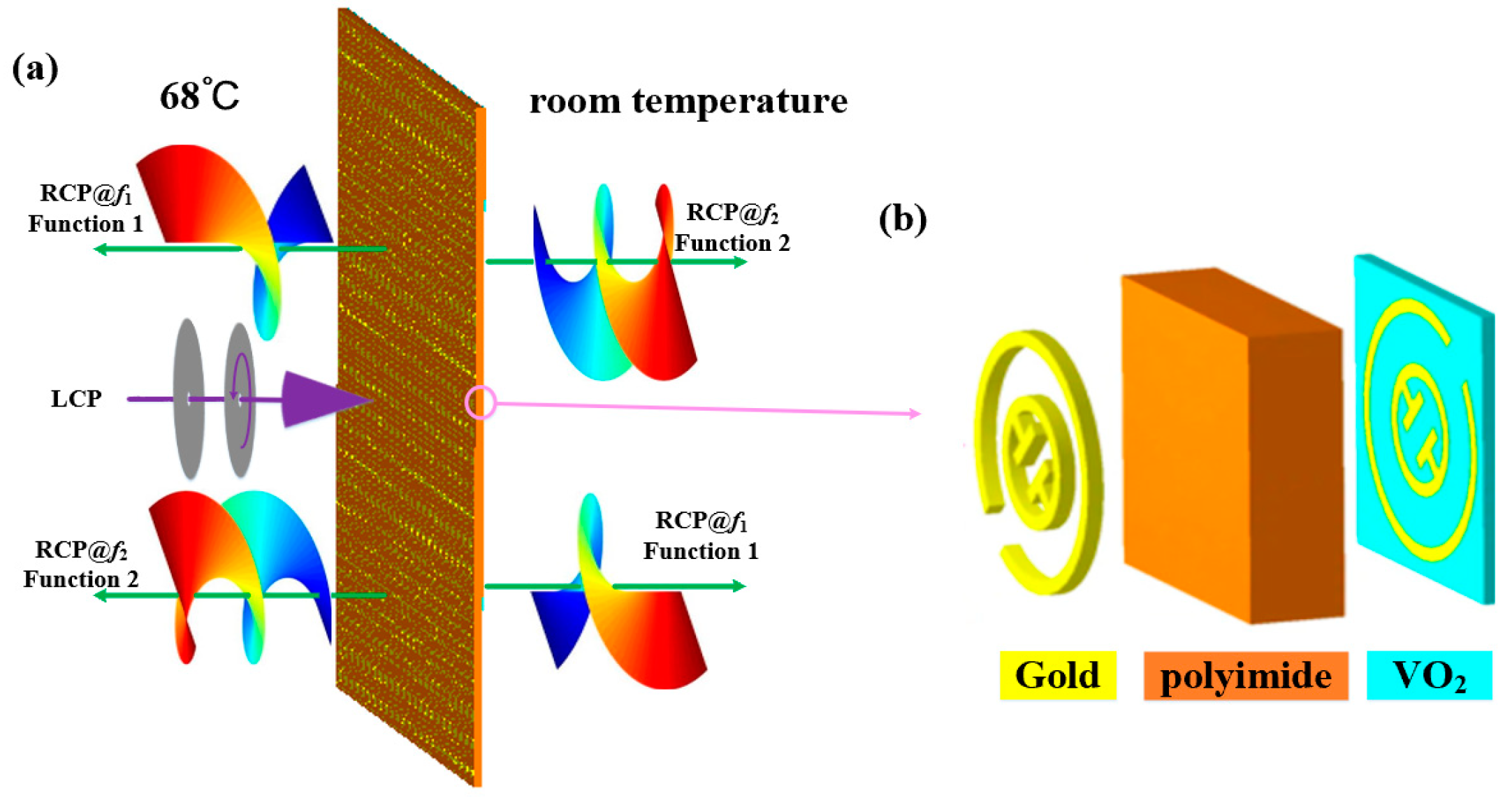

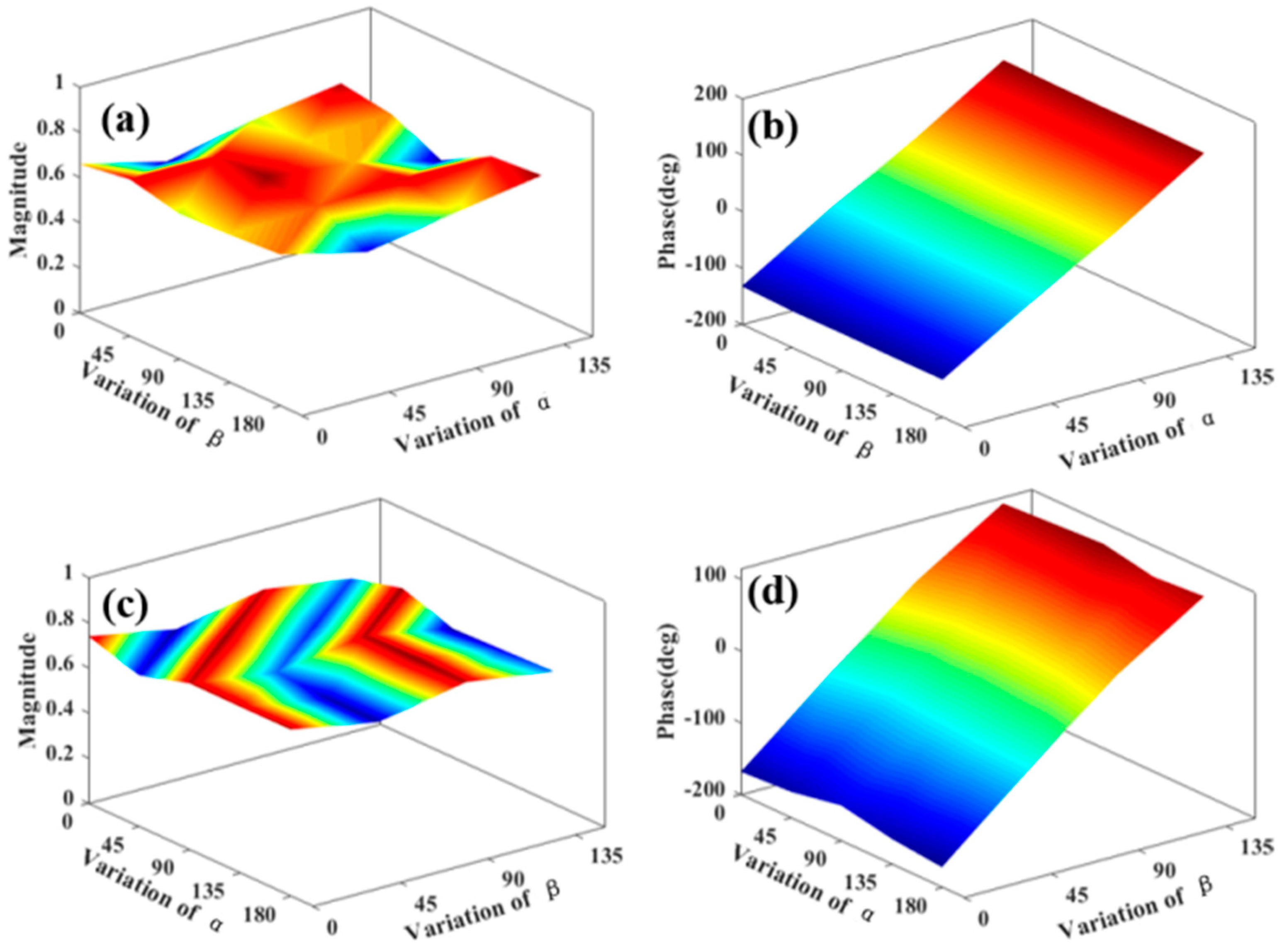
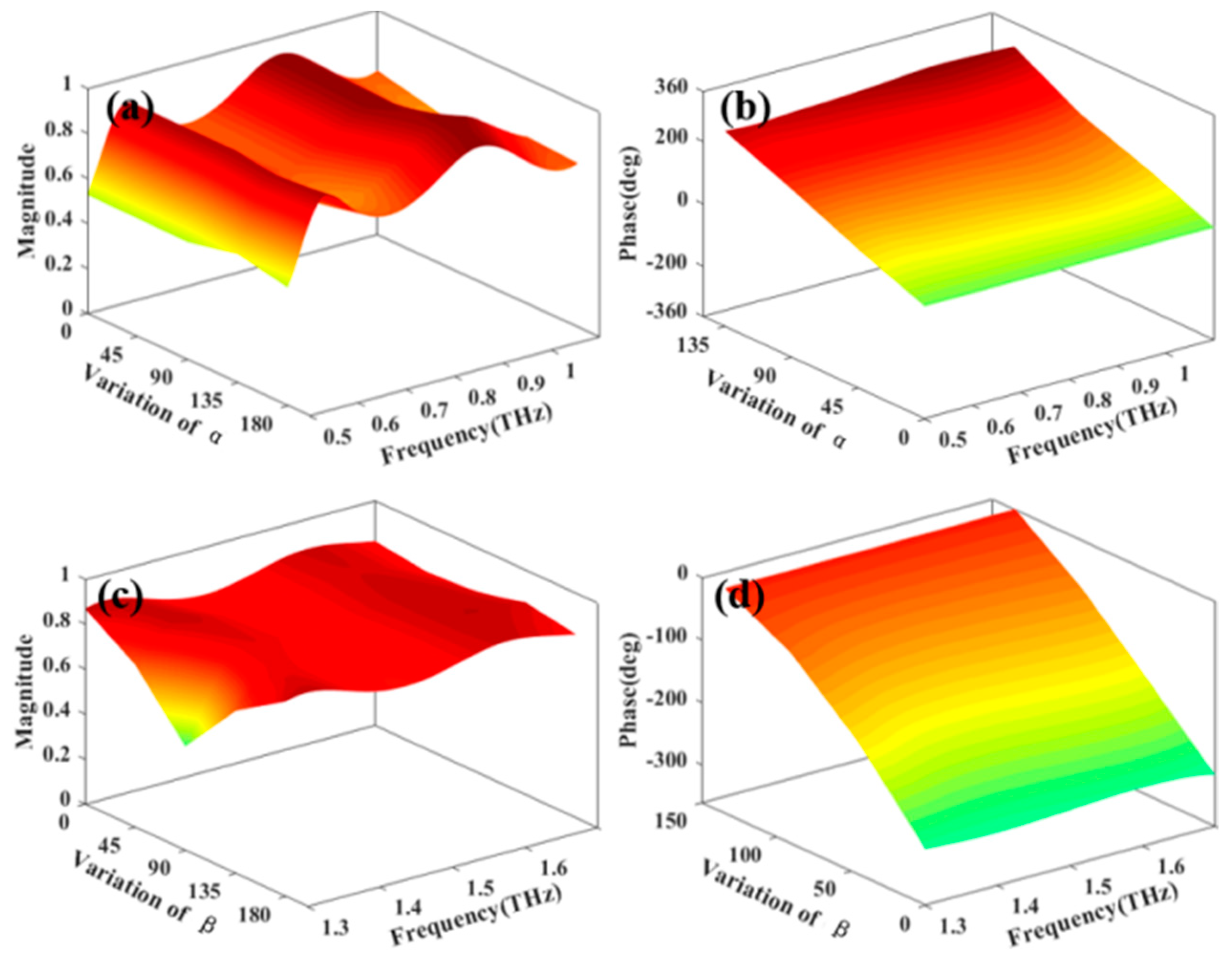

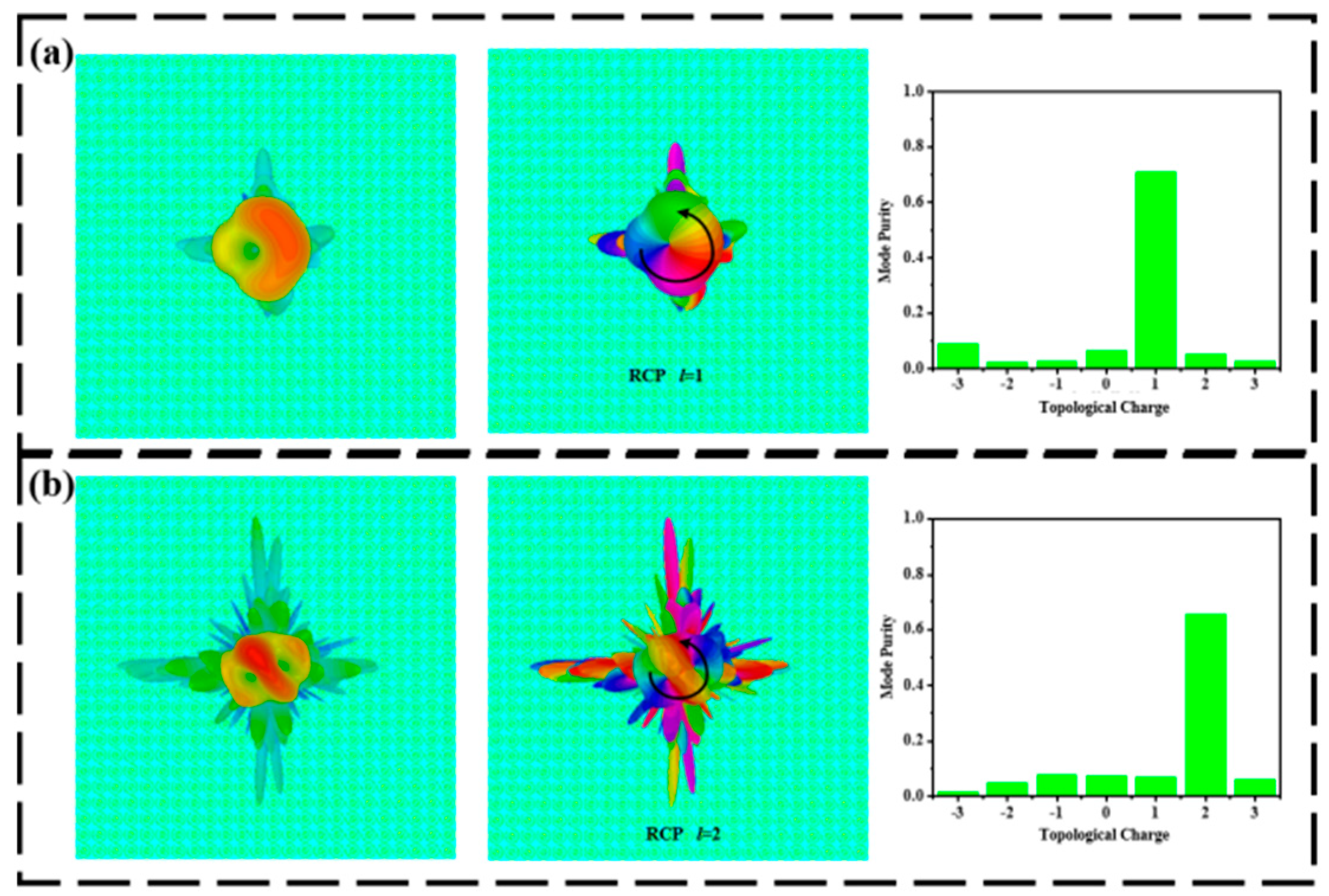
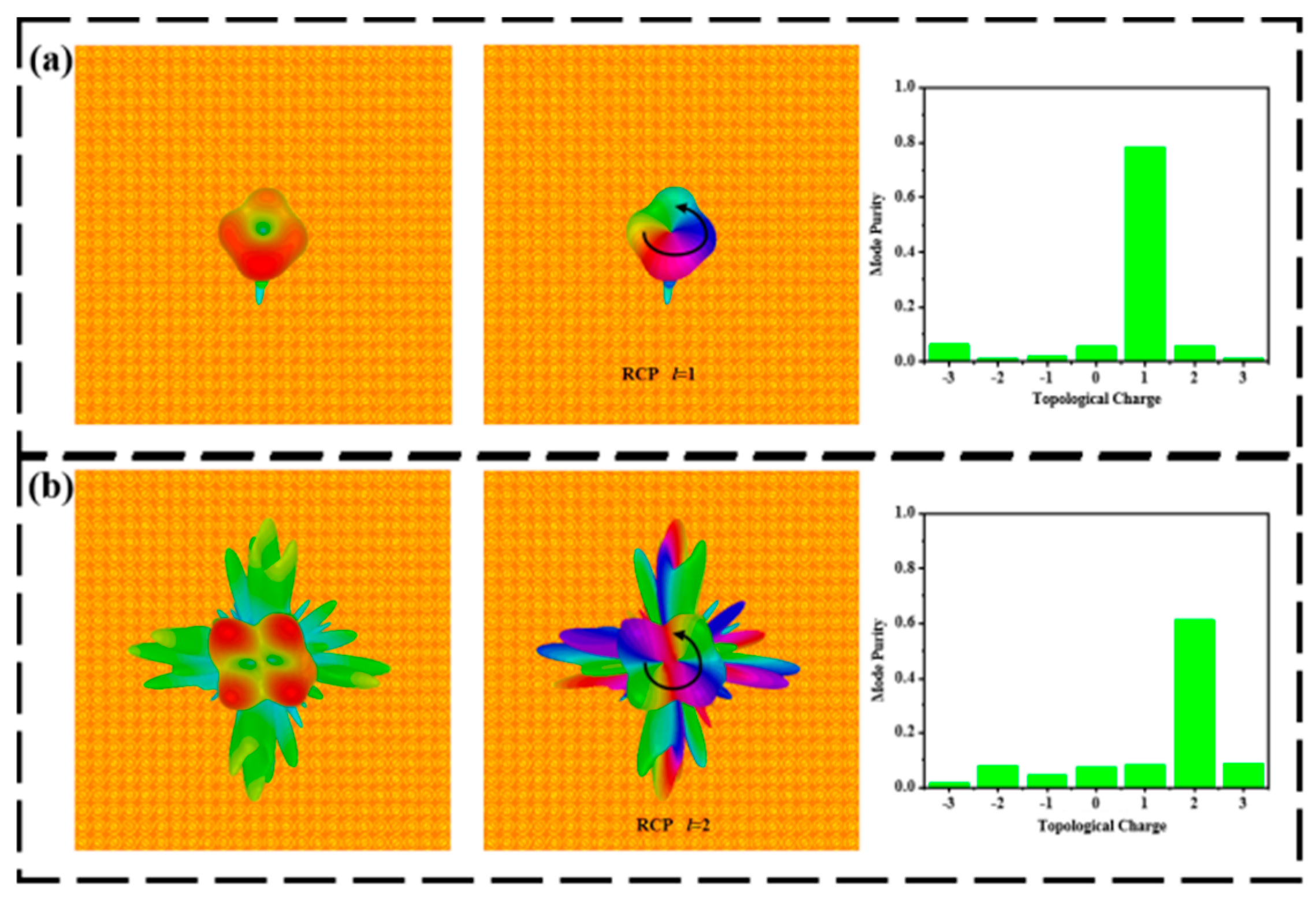


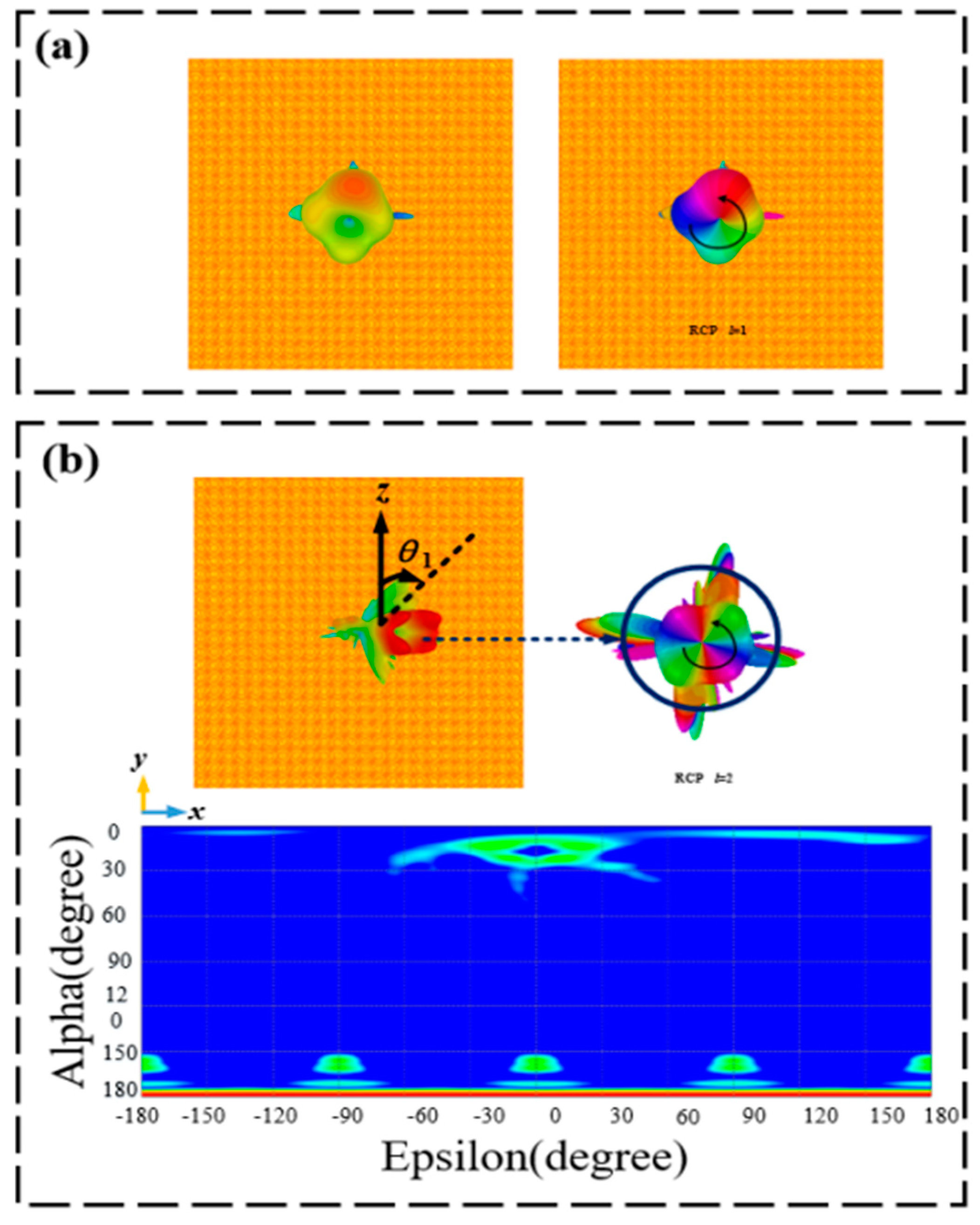
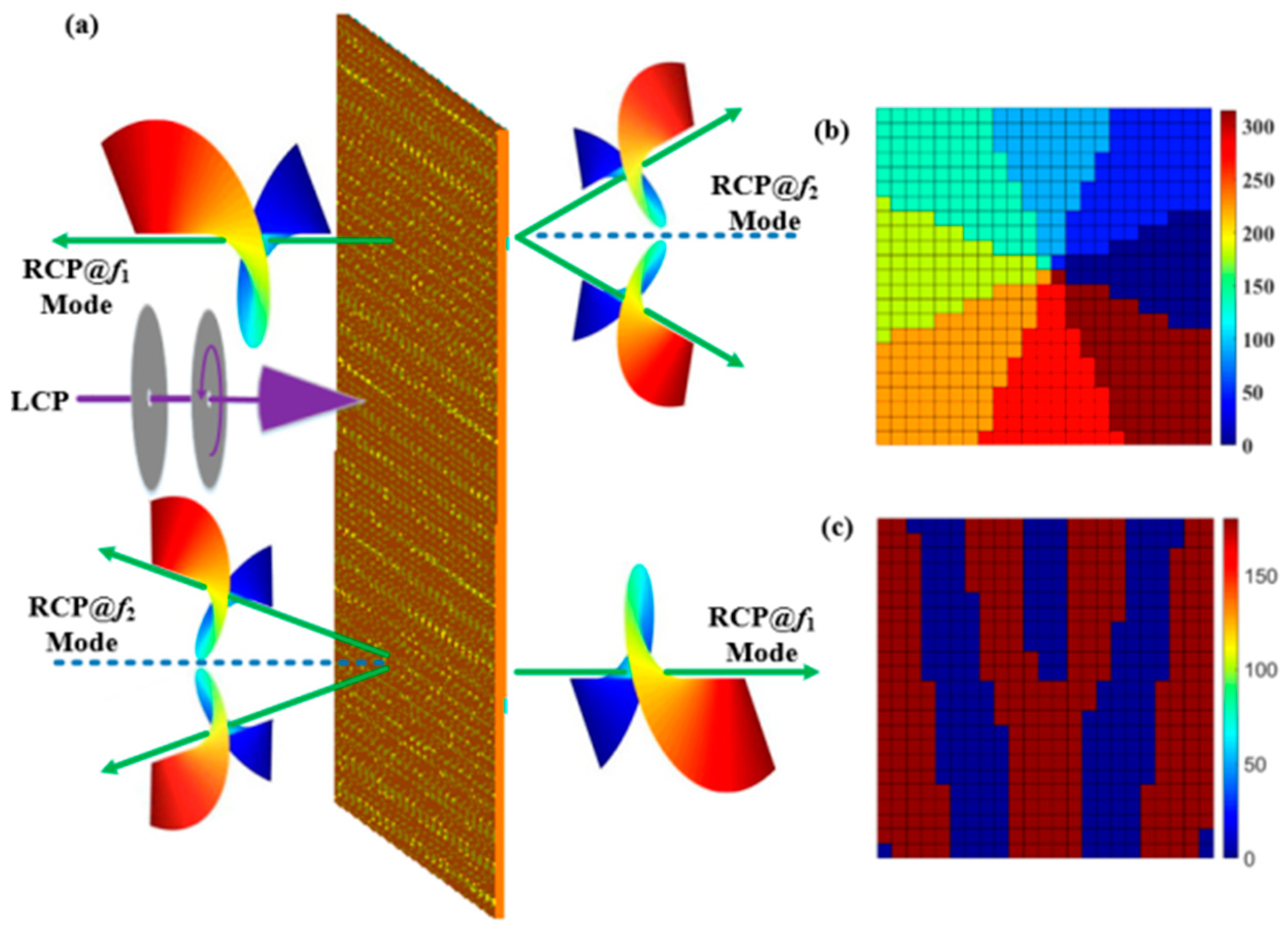
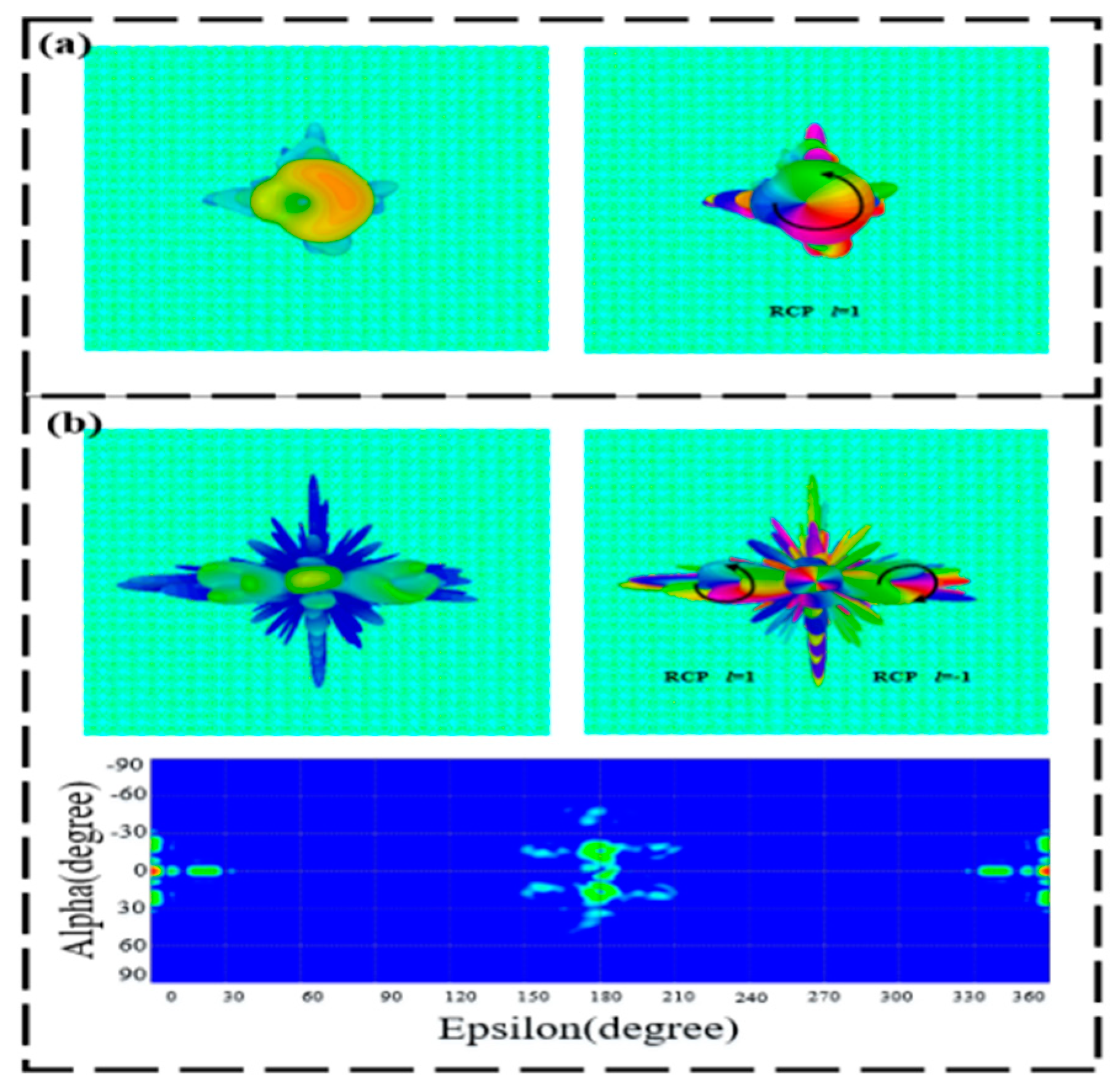
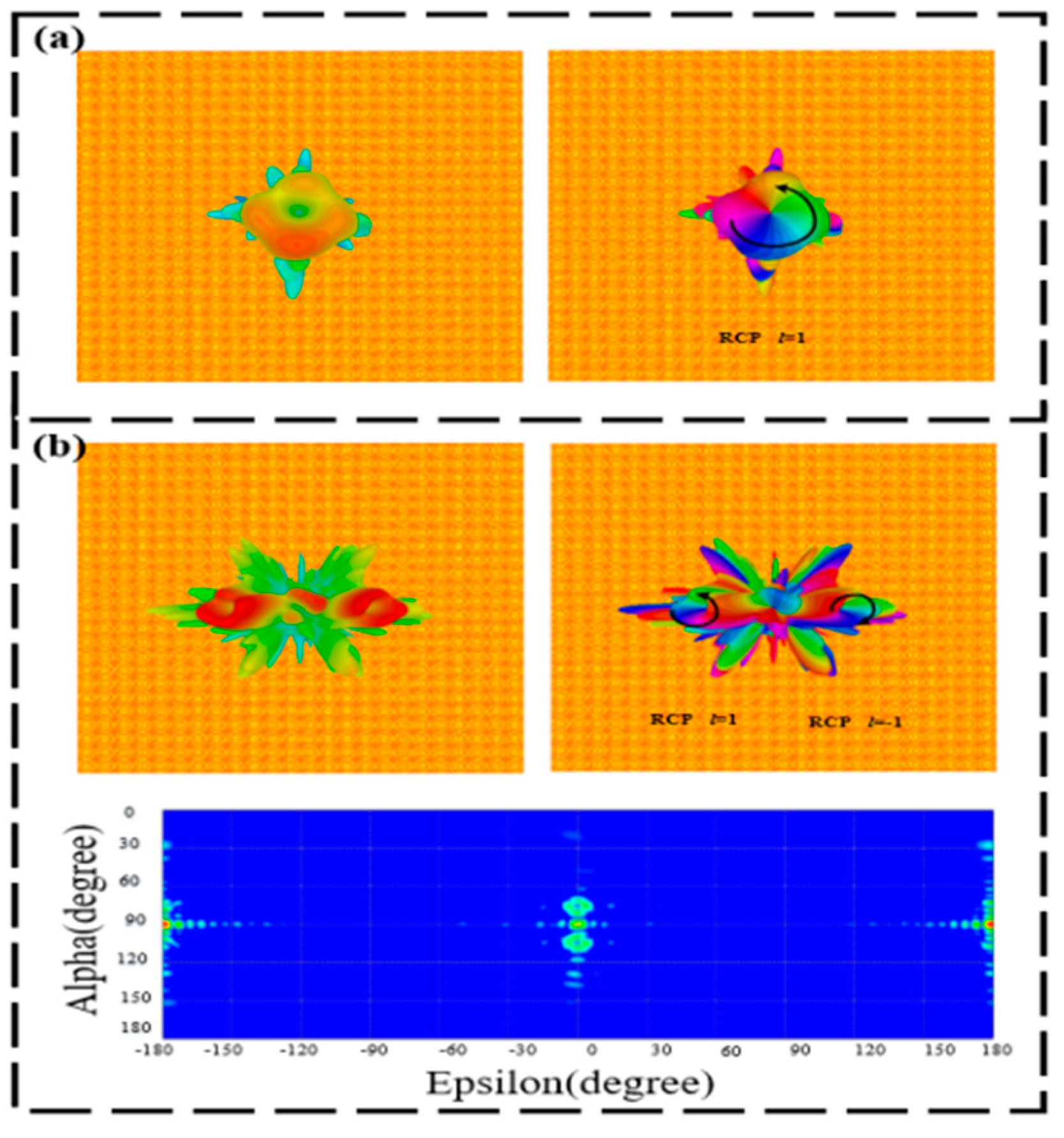
Publisher’s Note: MDPI stays neutral with regard to jurisdictional claims in published maps and institutional affiliations. |
© 2022 by the authors. Licensee MDPI, Basel, Switzerland. This article is an open access article distributed under the terms and conditions of the Creative Commons Attribution (CC BY) license (https://creativecommons.org/licenses/by/4.0/).
Share and Cite
Li, J.; Guo, F.; Zhang, S.; Liu, C. Bidirectional Terahertz Vortex Beam Regulator. Materials 2022, 15, 8639. https://doi.org/10.3390/ma15238639
Li J, Guo F, Zhang S, Liu C. Bidirectional Terahertz Vortex Beam Regulator. Materials. 2022; 15(23):8639. https://doi.org/10.3390/ma15238639
Chicago/Turabian StyleLi, Jiusheng, Fenglei Guo, Shuping Zhang, and Chao Liu. 2022. "Bidirectional Terahertz Vortex Beam Regulator" Materials 15, no. 23: 8639. https://doi.org/10.3390/ma15238639
APA StyleLi, J., Guo, F., Zhang, S., & Liu, C. (2022). Bidirectional Terahertz Vortex Beam Regulator. Materials, 15(23), 8639. https://doi.org/10.3390/ma15238639



